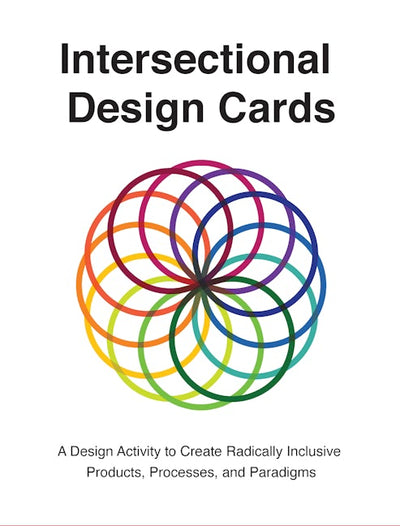You may also like
Accessible America
Regular price $26.00 Save $-26.00A history of design that is often overlooked—until we need it
Have you ever hit the big blue button to activate automatic doors? Have you ever used an ergonomic kitchen tool? Have you ever used curb cuts to roll a stroller across an intersection? If you have, then you’ve benefited from accessible design—design for people with physical, sensory, and cognitive disabilities. These ubiquitous touchstones of modern life were once anything but. Disability advocates fought tirelessly to ensure that the needs of people with disabilities became a standard part of public design thinking. That fight took many forms worldwide, but in the United States it became a civil rights issue; activists used design to make an argument about the place of people with disabilities in public life.
In the aftermath of World War II, with injured veterans returning home and the polio epidemic reaching the Oval Office, the needs of people with disabilities came forcibly into the public eye as they never had before. The US became the first country to enact federal accessibility laws, beginning with the Architectural Barriers Act in 1968 and continuing through the landmark Americans with Disabilities Act in 1990, bringing about a wholesale rethinking of our built environment. This progression wasn’t straightforward or easy. Early legislation and design efforts were often haphazard or poorly implemented, with decidedly mixed results. Political resistance to accommodating the needs of people with disabilities was strong; so, too, was resistance among architectural and industrial designers, for whom accessible design wasn’t “real” design.
Bess Williamson provides an extraordinary look at everyday design, marrying accessibility with aesthetic, to provide an insight into a world in which we are all active participants, but often passive onlookers. Richly detailed, with stories of politics and innovation, Williamson’s Accessible America takes us through this important history, showing how American ideas of individualism and rights came to shape the material world, often with unexpected consequences.

CNC Beginner’s Guide
Regular price $59.95 Save $-59.95CNC Beginner’s Guide presents the topic in a logical fashion, progressing from basics to more advanced subjects, using hands-on, project-based activities throughout. While the processes might be similar from one CNC machine to the next, every machine is inherently different in the way it behaves, the kinds of forces it is able to handle, and how it executes the work at hand, along with the level of precision it is capable of. Thompson helps readers of all skill levels navigate the nuances so they can become more proficient and efficient CNC machinists.
This fantastic work includes important information on tooling and fundamentals of cutting feeds and speeds. The appendix contains vital machining equations, tables of standard values, and suggested starting points for creating and tweaking your personalized tool libraries. An accompanying website rounds out the package with tutorial videos to help readers learn how to use the software and apply the concepts in the book to actual CNC programs.
Unique Features
- Inside tips and tricks from a CNC professional with a broad background of art, engineering, architecture, and teaching.
- In-depth discussions of using Fusion, the design environment and basic drawing tools, and CAD, the manufacturing environment, as well as creating programs for running on CNC machines.
- An affiliated website, www.cncbeginner.com, is perfect for visual learners, with helpful online video tutorials, color photographs, and graphs seen in the book with more detailed explanation.

Intersectional Design Cards
Regular price $35.00 Save $-35.00Intersectional Design drives innovation while supporting social justice and environmental sustainability. It's about getting the design right for people across all of society—from the very beginning.
Intersectional Design considers overlapping or "intersecting" factors—including gender, ethnicity, age, geographic location, etc.—that interact to shape a person's or a group's experience and social opportunities as a starting point for a more inclusive design approach.
The Intersectional Design Cards feature 12 intersectional factors, 4 design levels, and 16 case studies. The case studies tell the story of intersectional design—from inclusive crash test dummies, to voice assistants, to social robots, urban design, medical technologies, smart mobility, water infrastructure, marine science, and more.

The David Lance Goines Note Card Collection
Regular price $22.00 Save $-22.00For fifty years, artist, calligrapher, and printmaker David Lance Goines has been the creator of the inimitable designs that have come to define the Bay Area and its institutions. With stark lines, soft colors, and stunning text, his designs are immediately striking and effective, whether depicting an historic local restaurant or an internationally beloved film. While these designs are iconic and immediately recognizable to most, their timeless aesthetic is appealing to both the newcomer and the longtime fan.
Heyday is pleased to announce the initial offerings of the David Lance Goines Note Card Collections: Chez Panisse and Movies. Each set contains twelve white note envelopes and twelve blank cards printed on fine white stock.
Chez Panisse will feature 4 images celebrating the famed eatery:

Lessons on Change
Regular price $37.99 Save $-37.99The maelstrom of change takes us with it - but instead of fearing it, we can learn to shape it. Heraclitus' wisdom - Panta rhei - is more relevant today than ever: security, food, digitalization, power - all these cornerstones of our lives are in a state of upheaval. But change does not have to be a threat, it can be an opportunity!
In this volume, 15 creative minds have their say and show how they are tackling the changes of our time - with art, new narratives and innovative economic models. Their ideas inspire us not only to accept change, but to actively shape it.
- 15 creative minds show how change can be used as an opportunity
- Inspiration for upheaval
- Insight into creative strategies for shaping change yourself

The David Lance Goines Note Card Collection
Regular price $22.00 Save $-22.00For fifty years, artist, calligrapher, and printmaker David Lance Goines has been the creator of the inimitable designs that have come to define the Bay Area and its institutions. With stark lines, soft colors, and stunning text, his designs are immediately striking and effective, whether depicting an historic local restaurant or an internationally beloved film. While these designs are iconic and immediately recognizable to most, their timeless aesthetic is appealing to both the newcomer and the longtime fan.
Heyday is pleased to announce the initial offerings of the David Lance Goines Note Card Collections: Chez Panisse and Movies. Each set contains twelve white note envelopes and twelve blank cards printed on fine white stock.
Movies will feature 4 images celebrating classic films:







